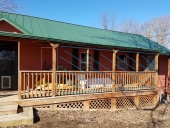





Sometimes the best map will not guide you, cause you can't see what's round the bend.
-Jimmy Buffett
















Brenda
Bloom where you are planted.
http://restfultrailsfoodforestgarden.blogspot.com/




Koed wrote:
I also just built this beautiful cold frame for starting seeds and then Paul says on the Survival Podcast don't start seeds, just plant them right in beds








outdoorfury wrote:
I am in the same boat as KOED. I found out about all of this through TSP. I just bought five acres of land and I want to build it as permaculture. Unfortunately, I already started with raised beds before listening to Mr. Weaton's advice on all of these ideas.
Does anybody have any other suggestions for a first timer? I am completely new to all of this.













Sometimes the best map will not guide you, cause you can't see what's round the bend.
-Jimmy Buffett





| I agree. Here's the link: http://stoves2.com |



